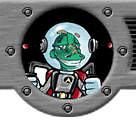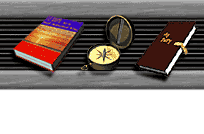





 |
 |
 |
||
 |
 |
 |
||
| |
|
|
|
|
| Home : Cognitive Module : Value of Structure : Balance of Power | ||||||||||||||
Balance of PowerControl shifts back and forth constantly in the classroom and in relationships. As Glasser (1984) discusses in his book, Control Theory, sometimes the struggle for control occurs because of a perceived or real need. He lists human needs as:Some of the most frustrating occurrences in the school day are a result of the student or teacher feeling powerless or out of control.
Many defense mechanisms protect the need to feel in control. Click here
to do a self survey on self control.
When upset, anxious or angry, we tend to become defensive. The following chart provides examples of common defenses.
This list is amusing since these behaviors are present in nearly every interaction. You may want to print out this list and monitor the next gathering of adults to see how frequently these defenses occur. Your findings may suggest that feeling in control is an important and pervasive feeling. It can be enlightening to ask someone to monitor an hour of interactions in the classroom, observing the number of times defenses are used, the defenses of specific students and which students elicit defensive maneuvers in the teacher. Gain Control of Control Issues Emotions trigger defenses. When we feel anxious, we engage in controlling behaviors. Anger also triggers these feelings and thus, the behaviors or reactions. This is called the "fight-flight" response. Click on
the rage button to find out your hostility quotient. This next illustration provides a guide to gaining control of our fight and flight reactions.
. Glasser, W. (1984) Control theory: a new explanation on how we control our lives. New York: Harper & Row. Once you
have completed this topic you should: |
||||||||||||||
| E-mail J'Anne Ellsworth at Janne.Ellsworth@nau.edu | ||||||||||||||
|
Course Created by J'Anne Ellsworth & Center for Technology Enhanced Learning Copyright
© 2001 Northern Arizona University |
||||||||||||||
 |
 |
 |
 |
 |
|